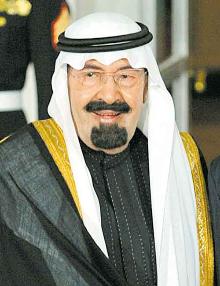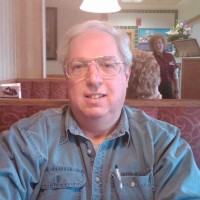Saudi Arabia's nuclear energy ambitions
Curbing domestic oil use is a key driver
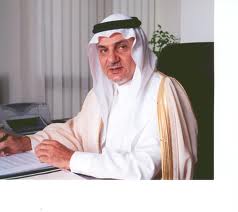
Turki al-Faisal, Saudi Arabia's point man on nuclear energy. (Photo: Saudi Arabia Embassy, Washington, DC)
The Kingdom of Saudi Arabia (KSA) plans to build 16 nuclear reactors over the next 20 years spending an estimated $7 billion on each plant. The $112 billion investment, which includes capacity to become a regional exporter of electricity, will provide one-fifth of the Kingdom's electricity for industrial and residential use and, critically, for desalinization of sea water.
This past April, the Saudi government announced the development of a nuclear city to train and house the technical workforce that will be needed to achieve these ambitions. It is clear that KSA's plans for spending its sovereign wealth fund will be mostly focused on the home front.
At the same time, a former Saudi ambassador to the United States , Prince Turki al-Faisal (served 2005-2006), has warned that a regional nuclear arms race could start if Iran does not curb its nuclear efforts. He told the Wall Street Journal on July 20, "It is in our interest that Iran does not develop a nuclear weapon, for their doing so would compel Saudi Arabia ... to pursue policies that could lead to untold and possibly dramatic consequences."
According to the WSJ, the Saudi government said the former ambassador does not speak for it in an official capacity. Al-Faisal, however, is widely believed to be on a short list to be the next foreign minister of KSA. How credible his claim is about the potential for a regional arms race remains to be seen.
Swapping nukes for oil drums
 The main driver for KSA's plans to build reactors is that at the rate that it is burning its own oil, it may have substantially less to export in just a decade or so. At a minimum, it may lose the excess capacity the rest of the world relies on when there are disruptions in supplies from other countries. One scenario suggested by energy analysts that follow oil markets is that within two decades most of the KSA output would be used for domestic consumption.
The main driver for KSA's plans to build reactors is that at the rate that it is burning its own oil, it may have substantially less to export in just a decade or so. At a minimum, it may lose the excess capacity the rest of the world relies on when there are disruptions in supplies from other countries. One scenario suggested by energy analysts that follow oil markets is that within two decades most of the KSA output would be used for domestic consumption.
Total Saudi reserves are estimated at 267 billion barrels. Debates rage in the news media over so-called peak oil, but energy experts discount them as speculative at best, and fantastic or worse on the downside.
Current production estimates put total KSA production capacity at 12.5 million barrels a day with a maximum output of 15 million barrels a day. The Wall Street Journal reported in April 2011 that production was running at 8 million-9 million barrels a day compared to 11 million barrels a day in 2010 reported by the Energy Information Administration. The difference is the global economic downturn has reduced demand. What's got the attention of energy planners is that domestic use in KSA could grow from 3.4 million barrels of oil a day in 2009 to 8.3 million barrels a day by 2028.
The official Saudi press agency said in April 2010 that it was "alarmed" by increasing oil and gas consumption for domestic use and the resulting impact on export revenues. Reduction of consumption, which pushes up use of fossil fuel to produce electricity, is not an option for both economic and political reasons. In 2011, the Saudi government has increased its subsidies of energy supplies by $100 million for domestic use, in part to dampen any possibilities of social unrest like that which toppled regimes in Tunisia and Egypt.
Like other Arab countries, KSA has a large population of unemployed young people who have better than average educations. This is a volatile mix and the arch conservatives that run KSA have defused it with lavish subsidies.
Electricity demand is predicted to increase from 75 GWe by 2018 to more than 120 Gwe by 2030. This growth can't be sustained by fossil fuel alone and also maintain the income stream the nation depends on from oil exports. Nuclear reactors are an obvious choice to intervene in an unsustainable growth scenario.
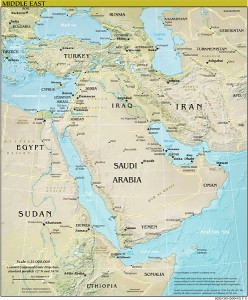
Saudia Arabia will likely locate its nuclear reactors at coastal sites to facilitate delivery of large components and desalinization operations. (Map: CIA World Fact Book)
This outlook is sending the Saudi government down a path to develop nuclear
energy. In April, it announced that it was setting up the King Abdullah City for Atomic and Renewable Energy (KA-CARE) to pursue this objective. Saudi Arabia is building up its transmission and distribution grids to interconnect with the UAE on the east and Oman to the south. It is developing its so-called empty quarter which Middle East experts point out isn't as empty as it sounds.
The new city's charter states that nuclear and renewable energies, especially solar, would be developed to ensure continued supplies of drinking water and electricity to its growing population and save hydrocarbon resources such as petroleum and gas for use by future generations. The objective is to make them a source of income for a much longer period.
The 16 reactors KSA plans to build will be part of a strategy of being a regional exporter of electricity as well as meeting its own needs. Most likely, the reactor locations will be along the Red Sea or Persian Gulf coastlines.
Nuclear imports will depend on diplomacy
Executing a plan to build 16 nuclear reactors will require lots of help from other countries. In 2008, a memorandum of understanding was signed with the United States, but there is no agreement under Sec.123 of the Atomic Energy Act that would allow U.S. firms to sell nuclear technology to KSA. There are concerns in Congress that doing so wouldn't be a good idea.
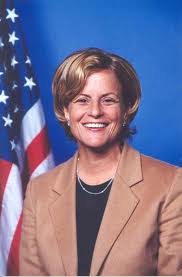
Rep. Illena Ros-Lehtinen (R., Fla.) is a hawk on U.S. relations with Iran and opposed to inking a 1-2-3 agreement with Saudia Arabia
U.S. Rep. Illena Ros-Lehtinen(R., Fla.), a hawk on containing Iran and the chair of the House Foreign Affairs Committee, told the WSJ on July 30 that she thinks selling nuclear reactor technology to KSA is a bad idea.
"I'm astonished that the administration is even considering a nuclear cooperation agreement with Saudi Arabia," she said.
She added that she thinks it is an "unstable country in an unstable region."
Her chief sticking point is the statement by former ambassador al-Faisal about the possibility of developing nuclear weapons if Iran doesn't curb its program.
Is it 1-2-3 or three strikes you're out?
The Obama administration would like to see a 1-2-3 agreement with Saudi Arabia along the lines of the one it signed with the UAE, which committed to reliable fuel services rather than developing its own enrichment capabilities. The UAE has been touted as a model for other nations as it has inked a $20-billion contract with South Korea to build four nuclear reactors. The United States has sought to ink similar deals with Jordan and Vietnam, but these discussions are not bearing fruit.
According to Mark Hibbs, a nuclear energy analyst with the Carnegie Endowment for International Peace, the lack of a 1-2-3 agreement with the United States could impact Saudi Arabia's ability to import nuclear technologies from other nations. France and Japan would not transfer enrichment and reprocessing technologies to Saudi Arabia, as in December 2009, both of these countries, along with the United States and the other members of the G8, pledged indefinitely not to export these items to newcomer countries.
In any case, Hibbs notes that Saudi Arabia has only a limited nuclear engineering workforce and lacks enrichment and related fuel-cycle facilities. This means that claims by its political leaders that it might be part of a regional nuclear arms race are diplomatic posturing but not credible threats. It would be no surprise that Iran has probably made this assessment as well.
Interestingly, the same Prince Turki al-Faisal who engaged in some diplomatic sabre rattling in his comments to the Wall Street Journal also has a lot of influence over Saudi Arabia's new nuclear city.
The Financial Times reported that the man in charge of the nuclear city project is Hashim Abdullah Yamani, who previously headed ministries for commerce, trade, and electricity. While it may be that the country won't get its own enrichment facilities, it could import reactors and sign on to reliable fuel services without ever inking a 1-2-3 agreement with the United States. That doesn't mean U.S. firms won't seek market share in the new build.
U.S. firms seek a piece of the pie
In August 2010, one of the biggest export deals that few ever heard of was announced by Chicago-based Exelon Corp. (a nuclear utility), The Shaw Group, and Toshiba, to build nuclear reactors in Saudi Arabia. Toshiba and Shaw would provide the reactors and the construction expertise, while Exelon would operate the reactors once they are built.
Under the terms of the agreement, the group jointly would pursue engineering, procurement, construction, and operations of nuclear power plants using Toshiba's Advanced Boiling Water Reactor (ABWR), which is a leading-edge nuclear power plant technology with already proven records of performance, reliability, and operation in Japan. The group also is capable of utilizing Westinghouse AP1000 technology.
Like any other deal along these lines, the Saudi government would have to execute a 1-2-3 agreement with the United States to make it work. With House Republicans likely lined up against it, President Obama will have to make some political magic to get a deal. So far the intractability of the House on just about anything the White House asks for does not bode well for U.S. firms seeking to enter the Saudi nuclear market, at least before the 2012 election.
----------
Dan Yurman publishes Idaho Samizdat, a blog about nuclear energy, and is a frequent contributor to ANS Nuclear Cafe.


